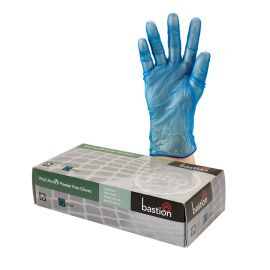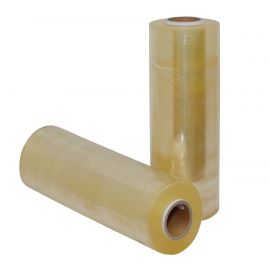
Salmonella, cross-contamination, and E. coli are all related to food safety and can cause foodborne illnesses. Here is some general information about each of these issues:
1. Salmonella:
- Salmonella is a type of bacteria commonly found in raw or undercooked poultry, eggs, and meat, as well as on fruits and vegetables.- It can cause salmonellosis, a foodborne illness characterized by symptoms such as diarrhea, fever, abdominal cramps, and vomiting.
- Salmonella can be transmitted through the consumption of contaminated food, cross-contamination, or inadequate food handling and preparation practices.
- Proper cooking, hygiene, and sanitation practices are essential to prevent Salmonella contamination and ensure food safety.
2. Cross Contamination:
- Cross-contamination occurs when harmful bacteria or other pathogens are transferred from one food or surface to another.- It can happen when raw meat, poultry, or seafood comes into contact with ready-to-eat foods, utensils, cutting boards, or surfaces.
- Cross-contamination can lead to the spread of pathogens, including Salmonella and E. coli, resulting in foodborne illnesses.
- Preventing cross-contamination requires practicing good hygiene, keeping raw and cooked foods separate, using separate utensils and cutting boards for different food items, and regularly cleaning and sanitizing surfaces.
3. E. coli (Escherichia coli):
- E. coli is a type of bacteria commonly found in the intestines of animals and humans.- While most strains of E. coli are harmless, some can cause foodborne illnesses, especially E. coli O157:H7.
- Contamination with E. coli can occur through the consumption of undercooked ground beef, contaminated produce, unpasteurized milk, or contaminated water.
- Symptoms of E. coli infection can include severe abdominal cramps, bloody diarrhea, and in some cases, kidney failure.
- Proper cooking, pasteurization, and practicing good hygiene are essential to prevent E. coli contamination and ensure food safety.
4. Food Safety Measures:
- To prevent Salmonella, cross-contamination, and E. coli contamination, it is important to follow food safety measures, such as:- Cooking foods to their recommended internal temperatures to kill bacteria.
- Practicing good hygiene, including regular handwashing.
- Keeping raw and cooked foods separate to avoid cross-contamination.
- Cleaning and sanitizing utensils, cutting boards, and surfaces used for food preparation.
- Avoiding the consumption of undercooked or raw foods, especially meat, poultry, eggs, and unpasteurized dairy products.
- Following proper storage and handling guidelines for food products.
By implementing these food safety practices and maintaining proper hygiene and sanitation standards, the risk of Salmonella, cross-contamination, and E. coli contamination can be significantly reduced, ensuring the safety of food in the butcher, food-related, and meat industry as well as in homes and restaurants.

The effects of Salmonella, cross-contamination, and E. coli in the butcher, food-related, and meat industry can have significant impacts on various aspects of the industry. Here are more detailed effects of these issues:
1. Public Health Impact:
- Outbreaks of foodborne illnesses caused by Salmonella, E. coli, or cross-contamination can lead to widespread public health concerns.- Contaminated meat products can cause illness in consumers, ranging from mild gastrointestinal symptoms to severe infections.
- Hospitalizations, long-term health complications, and even fatalities can result from consuming contaminated meat.
- Public health authorities may issue warnings or recalls, leading to reduced consumer trust in the safety of meat products from affected sources.
2. Economic Consequences:
- Contamination incidents can have significant economic ramifications for the butcher, food-related, and meat industry.- Product recalls and market withdrawals due to Salmonella, E. coli, or cross-contamination can result in substantial financial losses for manufacturers, distributors, and retailers.
- Disposal of contaminated products, cleaning and sanitization, and implementing corrective measures can incur substantial costs.
- The affected companies may face lawsuits, insurance claims, loss of sales, and damage to their brand reputation, leading to long-term financial implications.
3. Reputational Damage:
- Contamination incidents can severely damage the reputation of the butcher, food-related, and meat industry as a whole.- Negative media coverage, consumer backlash, and loss of trust can harm the industry's image and credibility.
- Companies associated with contamination incidents may experience decreased consumer loyalty, decreased market share, and difficulty in recovering their reputation.
- Rebuilding trust and restoring a positive reputation may require significant efforts, such as improved food safety practices, transparent communication, and proactive measures to prevent future incidents.
4. Regulatory Compliance and Enforcement:
- The butcher, food-related, and meat industry are subject to stringent regulations and oversight to ensure food safety and quality.- Failure to comply with these regulations regarding Salmonella control, cross-contamination prevention, or E. coli monitoring can result in regulatory sanctions.
- Regulatory agencies can impose fines, penalties, suspension of operations, or even permanent closure for repeated or severe violations.
- Non-compliance can lead to increased scrutiny, additional inspections, and the need for extensive corrective actions, adding to operational costs.
5. Consumer Confidence and Behavior:
- Contamination incidents can significantly impact consumer confidence and behavior within the butcher, food-related, and meat industry.- Consumers may become more cautious, demanding higher transparency, and stricter food safety assurances from meat suppliers.
- Shifts in consumer preferences towards alternative sources or brands that prioritize food safety can occur, impacting market dynamics.
- Consumer education campaigns, effective communication, and clear labeling can help restore consumer confidence and promote informed purchasing decisions.
6. Industry Collaboration and Improvement:
- Contamination incidents can serve as catalysts for industry-wide collaboration and continuous improvement.- Sharing best practices, research, and knowledge within the industry can help enhance food safety protocols and preventive measures.
- Industry associations, government agencies, and stakeholders can collaborate on research, training programs, and information sharing to promote better practices.
- Increased investments in research and development can lead to the development of innovative technologies and interventions for pathogen control.
Mitigating the effects of Salmonella, cross-contamination, and E. coli requires a comprehensive approach, including strict adherence to food safety protocols, robust quality control systems, staff training, and effective monitoring. Continuous improvement, industry collaboration, and consumer education are essential in maintaining high food safety standards and ensuring the long-term sustainability of the butcher, food-related, and meat industry.

To avoid Salmonella, cross-contamination, and E. coli in the butcher, food-related, and meat industry, it is essential to follow strict food safety practices. Here are some key measures to prevent these issues:
1. Good Hygiene Practices:
- Ensure that all employees follow proper hygiene protocols, including regular handwashing with soap and warm water before handling food.- Use disposable gloves when handling raw meat or other potentially contaminated products, and change them regularly.
- Provide training on personal hygiene and enforce strict hygiene standards throughout the facility.
2. Separation of Raw and Cooked Foods:
- Maintain separate areas, utensils, and equipment for handling raw and cooked foods to avoid cross-contamination.- Use color-coded cutting boards and utensils to differentiate between raw and cooked products.
- Ensure proper storage and separation of raw meats, poultry, and seafood from other food items.
3. Proper Cleaning and Sanitization:
- Establish a regular cleaning schedule to thoroughly clean and sanitize all surfaces, utensils, and equipment.- Use appropriate cleaning agents and sanitizers that are effective against bacteria and foodborne pathogens.
- Pay special attention to areas that come into contact with raw meats, such as cutting boards, slicers, and grinders.
4. Adequate Cooking and Temperature Control:
- Cook all meats and poultry to their recommended internal temperatures to kill harmful bacteria. Use a food thermometer to ensure proper cooking.- Implement strict temperature controls for storing, transporting, and displaying perishable food items.
- Avoid leaving cooked foods at room temperature for an extended period, as it can promote bacterial growth.
5. Supplier Verification and Quality Control:
- Establish relationships with reputable suppliers who maintain high food safety standards.- Conduct regular audits and inspections of suppliers' facilities to ensure compliance with food safety regulations.
- Implement rigorous quality control procedures to inspect incoming raw materials and finished products.
6. Staff Training and Education:
- Provide comprehensive training to employees on food safety practices, including proper handling, storage, and cooking techniques.- Educate staff about the risks of Salmonella, cross-contamination, and E. coli and the importance of adhering to food safety protocols.
7. Implement HACCP (Hazard Analysis Critical Control Points):
- Develop and implement a HACCP plan, which is a systematic approach to identify and control food safety hazards.- Conduct regular HACCP audits and reviews to ensure the plan is effective and up to date.
8. Regular Testing and Monitoring:
- Conduct regular microbiological testing of food products, surfaces, and equipment to detect any potential contamination.- Monitor critical control points (CCPs) throughout the production process to ensure that food safety measures are being followed.
9. Stay Informed and Updated:
- Stay abreast of the latest food safety regulations, guidelines, and best practices related to Salmonella, cross-contamination, and E. coli.- Continuously educate yourself and your staff on emerging risks and advancements in food safety.
By implementing these preventive measures and maintaining a strong food safety culture, the risk of Salmonella, cross-contamination, and E. coli can be significantly minimized in the butcher, food-related, and meat industry.







